|
|
|
|
 |
|
|
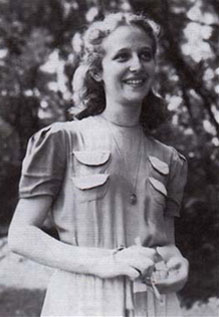 |
|
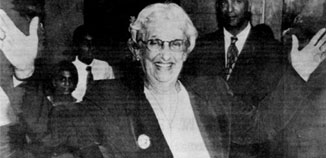 |
|
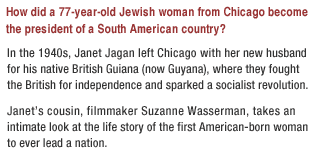 |
|
|
||
|
|
The Film |
Janet Jagan |
Guyana Timeline |
Filmmaker Bio |
Filmmaker Q&A |
Learn More |
Talkback |
Site Credits |
|
|
|
||
|
|
Janet Jagan - Thunder in Guyana
A Film by Suzanne Wassermann
|
||||||||||||||||||||
http://www.pbs.org/independentlens/thunderinguyana/
![]()
|
|
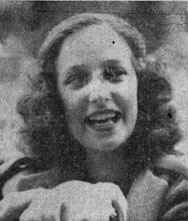 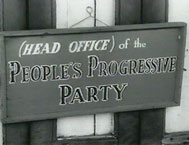 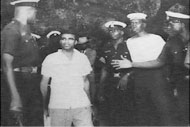 |
Janet Rosenberg was born in Chicago, Illinois, on October 20, 1920. After high school, she attended Wayne State University and the Cook County Nursing School. In 1942, she met Cheddi Jagan at a party hosted by a mutual friend. He was a Guyanese dentistry student at Northwestern University whose grandparents had immigrated to Guyana from India. Both were involved in radical politics, and they married the following year against the objections of her family.
After Cheddi’s visa expired in 1943, he returned to Guyana (then British Guiana). Janet followed soon after. Cheddi set up a dental surgery practice, with Janet working as his assistant. The couple quickly became involved with local politics and the Guyanese labor struggle, and Janet became a member of Guyana’s first union, working with labor leader Hubert Critchlow to organize domestic workers to strike for labor rights. Janet’s early political work in Guyana also included co-founding the Women’s Political and Economic Organization and the Political Affairs Committee in 1946. The couple's first child, Cheddi Jagan, Jr., was born in 1949.
![]()
In 1950, Janet co-founded the People’s Progressive Party (PPP) with Cheddi and trade union leaders Ashton Chase and Jocelyn Hubbard. The PPP was Guyana’s first multi-racial political party. In addition to serving as the party’s general secretary, Janet was also the first woman to be elected to the Georgetown City Council. Three years later, Janet was elected to the House of Assembly as the deputy speaker. American newspapers dubbed her the “second Eva Peron.” Janet sent a Western Union telegram to her parents that read, "Cheddi, myself and Party won overwhelming victory."
The 1953 elections in Guyana were the country’s first under universal suffrage. Although voters elected Cheddi as their chief minister, the British, fearful of the first Marxist leaders in the Western Hemisphere, ousted the PPP from office after only 133 days. In 1955, following the birth of Cheddi and Janet’s second child, Nadira, the couple was jailed as political prisoners.
The 1957 elections once again elected Cheddi as chief minister, and Janet as Guyana’s minister of labor, health and housing. Among her accomplishments were establishing health centers, maternity and child welfare clinics and improving wage and work conditions. Although the PPP was in office during this time, the party’s power was minimal, as the British still controlled the country’s government. In 1963, Janet became minister of home affairs, a post she later quit out of frustration over British control.
The early 1960s were turbulent times in Guyana, both economically and politically. In 1962, rioters tried to force the PPP out of office, and the American government continued to instigate unrest that led to the 1964 “reign of terror,” which uprooted, killed and injured thousands of Guyanese. When bombs were planted at PPP headquarters, Cheddi and Janet decided to send their daughter Nadira to live in the United States, and Janet was forced to keep a low profile. As she explained in THUNDER IN GUYANA, “In the '60s I could not be seen for years. I couldn't be seen or they would start attacking, burning, killing. I had to just lie low for a long time.”
![]()
|
|
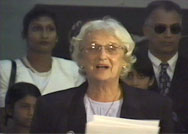 |
Guyana finally won independence from the British in 1966, but by this time the PPP’s government had been replaced by the People’s National Congress (PNC), led by Forbes Burnham, a former PPP chairman who had since split with Cheddi and Janet. During Burnham’s 25-plus years in office, Guyana accumulated the worst foreign debt in the hemisphere and banned open elections. By the 1980s, half of Guyana’s population had fled the country. Janet continued her political work, editing the PPP-backed newspaper the Mirror and writing several children’s books about Guyana’s struggle for independence, and was elected opposition member of Parliament in 1973, 1980 and 1985.
In 1992, Guyana held its first free and fair elections in almost three decades, and with her husband elected president, Janet became the country’s first lady. In 1997, after Cheddi’s death, she became Guyana’s first woman president and commander-in-chief. After resigning for health reasons in 1999, she still continues to work in her office at party headquarters each day.
http://www.pbs.org/independentlens/thunderinguyana/janet.html
![]()

Filmmaker Suzanne Wasserman grew up fascinated by her glamorous cousin Janet. At 23, Janet Rosenberg, a beautiful nursing student born and raised in Chicago, fell in love with a handsome dental student from a country no one in her family had even heard of. Together, the political power couple became known as the founders of modern Guyana, and in 1997, Janet became the first American-born woman to lead a nation. In THUNDER IN GUYANA, Wasserman uses interviews, family photos and archival footage to tell the story of her remarkable cousin: a tale of life-long love, political campaigns and struggles to bring progressive policies to an adopted country.
|
|
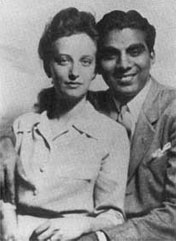
Cheddi and Janet Jagan's 1943
wedding photo 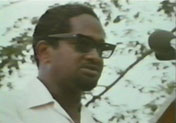
Forbes Burnham of the People's
National Congress |
Dashing Cheddi Jagan, born in the former British colony of Guyana on South America's northern coast, was the son of East Indian Guyanese indentured sugar plantation workers. Both Janet and Cheddi were involved in radical politics, and when they married in 1943, it was against the strenuous objections of her Jewish and his Hindu parents. As socialist revolutionaries, they planned to go to Guyana—then called British Guiana—to fight for the country’s independence from colonial England. Janet and Cheddi spent the next half-century as Guyana’s political leaders, founding its first modern political party, the multi-racial People’s Progressive Party, in 1950. In Guyana’s historic election of 1953, the first election in its history with universal adult suffrage, Cheddi was elected Chief Minister and Janet the country's first female minister and deputy speaker of Parliament. They led the first Communist government in the Western hemisphere, creating a firestorm in the press.
Janet and Cheddi governed Guyana for 133 days, until British Prime Minister Winston Churchill deposed them for their Communist beliefs. They both served time in jail and under house arrest. Remaining the most popular leader in the colony, Cheddi Jagan was re-elected and became Guyana’s prime minister in 1961. But this time, the U.S. Kennedy administration intervened, fearful of a Communist presence in its hemisphere, and recommended a covert program to reduce the Jagans’ popularity. As seen in the film, the American CIA instigated labor unrest, a vicious misinformation campaign and race riots that left hundreds of Guyanese dead and injured. During this difficult time, the Jagans feared for their children's lives, sending them to live abroad until the tensions died down. In 1964, under pressure from the United States, Britain created constitutional changes in Guyana which made it impossible for Cheddi to retain power despite his continued popularity. Forbes Burnham, a former ally of the Jagans who later turned against them, rose to power and ruled Guyana with an increasingly dictatorial hand for 28 years. Yet the Jagans continued to fight for their country, traveling internationally and speaking out on progressive issues.
1992 heralded Guyana’s first free and fair elections in almost three decades, and Cheddi Jagan was sworn in as president. He passed away in 1997, after which Janet accepted her party’s presidential nomination, and on December 15, 1997, she became president of Guyana, becoming the first woman and first foreign-born candidate to do so. Far from being a simple biography of an unconventional woman, THUNDER IN GUAYANA interweaves the threads of family history, one woman’s incredible life story and the complex social and political history of the country of Guyana.
|
|
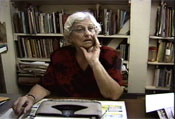
|
![]()
Filmmaker Suzanne Wasserman shot THUNDER IN GUYANA between 1997 and 1999. In January 2005, she reported:
This year, Janet Jagan will turn 85. She still lives in Georgetown, Guyana, where she has lived for the past 62 years She still goes to her party office every day. Her son, Cheddi, Jr. and his family live on Long Island in New York. Her daughter, Nadira, and her family live in Toronto, Canada.
![]()
Director/Writer/Producer Suzanne Wasserman talks about her childhood impressions of her cousin Janet, the challenges of filming a family member and thinking about the past.
What inspired you to make a film about your cousin Janet? What were your impressions of her when you were growing up?
My mother told me stories about Janet when I was a little girl. She kept an album filled with telegrams, newspaper articles, photographs and letters in our hall closet in our house in Chicago. Sometimes, she’d take the album out and look at it with me and tell me stories about Janet.
Periodically, Janet would come to Chicago to visit my mother and her brother. But in those situations, I’d always see Janet in the context of family—at weddings, birthday parties, anniversaries. It was hard to reconcile the reality of Janet with the amazing story of her life.
Once I became an historian, I knew at some point I would go back to Janet’s story and write about it. I ended up making a film instead.
How were you received in Guyana?
Janet was initially not encouraging about my visit to Guyana. She was 77 at the time and running for president and she didn’t want to be responsible for family during the election. Very few of our relatives had ever been there (neither her father nor brother had ever visited her there). I reassured her that she wasn’t responsible for us. I doubted we would be able to spend much time with her. But once we arrived, she welcomed us with open arms and spent as much time with us as she could.
What do you remember about the Jim Jones massacre? Was Janet in Guyana at the time?
I remember being horrified by it. Janet and Cheddi were in Guyana. They were opposition leaders and Janet tried in Parliament to get Guyana’s leader Forbes Burnham to answer questions about what had happened and how it had been allowed to happen. He refused. That was a particularly horrible era in Guyana—an era of chaos, corruption and repression, and Jonestown happened in the middle of it.
What surprised you the most while making THUNDER IN GUYANA? What did you learn that was unexpected?
I learned how hard and at the same time rewarding filmmaking is. It’s so different from writing. You can always improve your writing, but if you don’t have money to go back into the editing room, you are stuck with the decisions you made.
I was also surprised by how generous people in the independent filmmaking world are. Many, many people who worked on the film at various points donated their expertise and knowledge. Academia isn’t like that!
Even though I knew the Jagans’ story my whole life and knew it was an important but little-known political story, I learned that it was also a great love story.
What were the greatest challenges involved in making a documentary about a family member?
The greatest challenge was that I had no access to the opposition parties. As soon as people discovered I was related to Janet, her opponents refused to speak with me. I really struggled with the difficulty of being an historian and a cousin. I felt like I was always wearing two hats—my historian hat and my cousin hat. I wanted to make a film that was accurate and told a little-known story. I wasn’t as concerned with being objective because I think all history is written through the subjective lens of the historian. But I also didn’t want the film to be simply hagiographic. I tried to strike a balance between telling the story as an historian but also as a cousin. I’ve always admired Janet tremendously and didn’t want to betray her trust in me.
The independent film business is a difficult one. What keeps you motivated?
I wish I could make films full-time but I know that’s unrealistic. I work full-time at the City University of New York (CUNY) as associate director of the Gotham Center for New York City History. I’m motivated by the fact that I love to tell stories and I’m very much in favor of history that reaches a broad audience.
What were some of the obstacles you faced in the process of making your film?
I’m by nature a nervous person and I wasn’t sure I’d really be able to get on a plane and go down to Guyana for the election. Elections in Guyana had been violent in the past. A few days before we were supposed to leave, I almost chickened out. But I had smartly enlisted my younger sister, Nadine, to come with me as part of the crew. I called her to tell her I was thinking about backing out of the trip. She told me she was going to go without me! She shamed me into going.
There were riots both times while we were there and I was scared but amazed myself nonetheless.
Why did you choose to present your film on public television?
Public television is the perfect venue for my film. My film tells an important, but little-known, political story. PBS is also the perfect venue because it’s an opportunity to tell a story about a country that Americans know little about. Many people think Guyana is in Africa or that Guyanese speak Spanish. Neither is true. Janet’s election was reported on the local news in Chicago and the newscaster said she lived in the tiny African nation of Guyana! Finally, PBS is fitting because my film features two incredibly courageous and admirable protagonists who should have better name recognition in the U.S.
What are your three favorite films?
Vittorio De Sica’s The Bicycle Thief
Frank Capra’s It’s a Wonderful Life
Barbara Kopple’s Harlan County, USA
What didn’t you get done when you were making your film?
I was amazed with how much I did get done! I was working full-time and have a husband with a very demanding job (he’s a criminal defense lawyer) and a teenage son (he became a teenager over the course of making the film!).
What I didn’t get done was cooking, shopping, cleaning, exercising and anything else I could cut out! My family was incredibly supportive.
When I finished the film, I told people I’d never make another one. But then after a month or two, I got bored and now I’m working on a new project. It takes place in Brooklyn though, so easier to get to than South America!
If you weren’t a filmmaker, what kind of work do you think you’d be doing?
By profession, I’m an historian. Because this is my first film, it’s been an adjustment to think of myself as a filmmaker as well. I think it’s the perfect combination.
What advice do you have for aspiring filmmakers?
The best advice I heard was on a panel at IFFM/IFP in the fall of 1997. Someone on the panel said: If you have a great story and you have access to that story, you can make a film. I realized I had both and set to work immediately! Another piece of advice: the film isn’t done until you say it’s done. I re-edited the entire film with a new editor after the first edit because I wasn’t happy with it. I’m glad I did, even though it ended up taking me longer to finish.
What sparks your creativity?
Thinking about the past. There are so many incredible
stories to tell. The past is a great big adventure and I don’t think I’ll ever
stop being inspired to write, think and make films about it.
http://www.pbs.org/independentlens/thunderinguyana/qa.html
![]()
![]()
![]()

|
|
Suzanne Wasserman Director, Writer and Producer Wasserman has a Ph.D. in American history from New York University. She is the associate director of the Gotham Center for New York City History, at the City University of New York, Graduate Center (www.gothamcenter.org). The Gotham Center seeks to boost the visibility of New York City's historical assets for citizens and tourists alike. Wasserman lectures, writes and consults about New York City history, especially the history of the Lower East Side. She has published widely on topics such as the Depression, Jewish nostalgia, housing, restaurant culture, tourism, pushcart peddling, the Jewish silent screen actress Theda Bara and 19th century saloons. THUNDER IN GUYANA is her first film. She is also an historical consultant for Ron Howard's production company, Imagine Entertainment. |
http://www.pbs.org/independentlens/thunderinguyana/bios.html